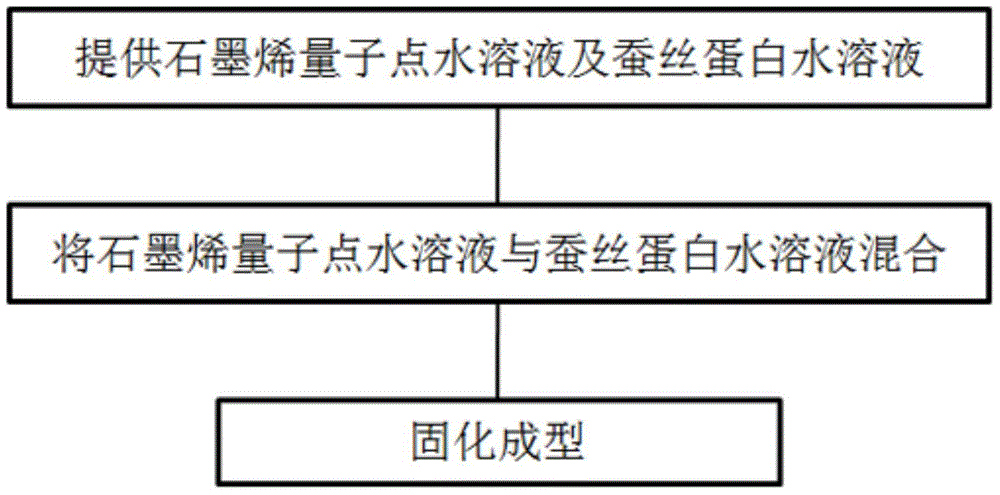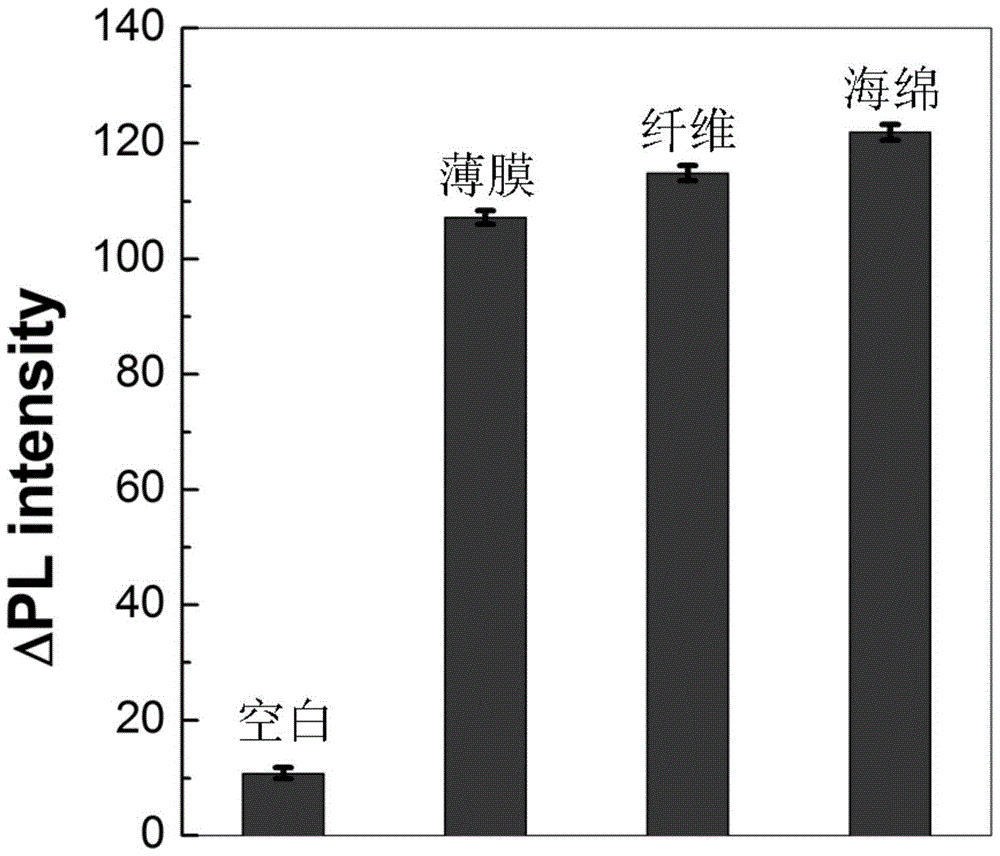Antibacterial composite material, preparation and application of graphene quantum dots and silk protein
A technology of graphene quantum dots and silk protein, applied in medical science, surgery, etc., can solve problems such as poor biocompatibility, high cost, and heavy metal pollution
- Summary
- Abstract
- Description
- Claims
- Application Information
AI Technical Summary
Problems solved by technology
Method used
Image
Examples
preparation example Construction
[0088] like figure 1 Shown, the preparation method of described graphene quantum dot and silk protein antibacterial composite material at least comprises:
[0089] First, perform step S10: provide graphene quantum dots or doped graphene quantum dot aqueous solution;
[0090] Wherein, the graphene quantum dots in this step can be directly prepared by graphene oxide, specifically, the preparation method of the graphene quantum dots includes:
[0091] Step S11: providing graphene oxide powder;
[0092] In this step, the graphene oxide powder has no specific requirements. Preferably, the graphene oxide has a lateral dimension of 0.5-100 nm.
[0093] Step S12: adding a mixed solution of nitric acid and sulfuric acid to the graphene oxide powder and stirring to form a first mixed liquid;
[0094] Wherein, the concentration of the nitric acid in the mixed solution of the nitric acid and sulfuric acid is 50-80wt%, the concentration of the sulfuric acid is 50-98wt%, and the volume ...
Embodiment 1
[0171] combine figure 1 , first, perform step S10: provide graphene quantum dot powder;
[0172] Specifically, in this embodiment, in this step, graphene oxide powder is provided, including:
[0173] Step S11: providing 5.00 g of graphene oxide powder;
[0174] Step S12: Add the graphene oxide powder into a mixture of 50 mL of concentrated nitric acid (67 wt%) and 120 mL of concentrated sulfuric acid (98 wt%), stir mechanically at 5°C for 60 min at a stirring rate of 1200 r / min, and form the first mixed liquid;
[0175] Step S13: Slowly add 60g of NaClO to the first mixed liquid 3 In order to generate an oxidation reaction, control the reaction temperature of the oxidation reaction to 0-5°C, and react for 12 hours to form a second mixed liquid;
[0176] Step S14: Cool the second mixed liquid to room temperature, add 200 mL of distilled water to dilute to form a third mixed liquid, and filter it with a 10 nm porous alumina filter;
[0177] Step S15: adding ammonia water to...
Embodiment 2
[0186] Select the graphene quantum dot powder obtained in step S16 in Example 1, carry out step S17, disperse the graphene quantum dots in the solvent, add B-containing dopant, solvothermal reaction, prepare B-doped graphene quantum dots .
[0187] Specifically, in this embodiment, take 0.5 g of the graphene quantum dot powder obtained in step S16, and ultrasonically disperse it in 10 mL of water, add 1.0 mL of dimethylaminoborane as a dopant to the dispersion, and place the mixed liquid in Lining a polytetrafluoroethylene reactor with a volume of 20mL, and placing the inner lining in a stainless steel reactor body, heating and reacting at 200°C for 24h.
[0188] Afterwards, step S18 is performed, and after the reaction, the reaction solution is filtered, dialyzed, and freeze-dried to obtain B-doped graphene quantum dot powder.
[0189] Specifically, in this example, the reaction liquid obtained in step S17 was cooled to room temperature, and filtered with a 10 nm porous alum...
PUM
| Property | Measurement | Unit |
|---|---|---|
| molecular weight | aaaaa | aaaaa |
| size | aaaaa | aaaaa |
| thickness | aaaaa | aaaaa |
Abstract
Description
Claims
Application Information
 Login to View More
Login to View More - R&D
- Intellectual Property
- Life Sciences
- Materials
- Tech Scout
- Unparalleled Data Quality
- Higher Quality Content
- 60% Fewer Hallucinations
Browse by: Latest US Patents, China's latest patents, Technical Efficacy Thesaurus, Application Domain, Technology Topic, Popular Technical Reports.
© 2025 PatSnap. All rights reserved.Legal|Privacy policy|Modern Slavery Act Transparency Statement|Sitemap|About US| Contact US: help@patsnap.com



